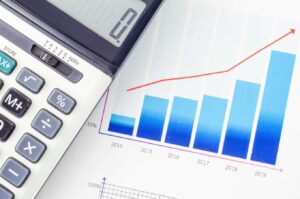Different Types of Savings Account & How to Use Them
Get your savings organized to help reach your goals.

Saving is more than just setting money aside when you have some spare cash. It’s an important component of a financial strategy that should be approached in a methodical and organized way. But how do you ensure your savings get funneled into the right places? Learn the difference between short-, mid-, and long-term savings and how to use them to your advantage.
Short-term savings
Short-term savings should be comprised of funds set aside for the immediate future, about 1-3 months. This includes the minimum amount needed in case of an emergency and for one-off expenses that don’t fit into your regular budget. These savings are usually kept in a traditional savings account where they are easily accessible.
How much money should I have in short-term savings?
At a minimum, financial experts recommend having at least $1,000 in emergency savings to cover unexpected events; things like a home or vehicle repair, and out-of-pocket medical expenses. Short-term savings help prevent financial distress and provide peace of mind.
In addition to having enough savings for emergencies, you may also want to set additional money aside for specific occasions like birthdays and holidays, big-ticket item purchases, traveling, and vacations.
How to use short-term savings
If you end up dipping into your short-term savings, prioritize replenishing the money as soon as possible so you’re ready the next time something happens. Think of it as ‘paying yourself’ and maintaining a reliable backup source of funds.
Mid-term savings
Mid-term savings are meant to help you maintain stability and achieve financial goals. These can be things you’d like to achieve in the next few years, like making a down payment on a house or vehicle. Mid-term savings also acts as a financial safety net in case of circumstances like unemployment or extended illness.
How much money should I have in mid-term savings?
While your short-term savings may be able to cover a one-off event, your mid-term safety net is meant to support you over a longer period. Financial experts recommend having a minimum of 3-6 months of budget expenses set aside; enough to cover all bills plus other necessary expenses like groceries and gas without having to rely on credit, even if no money is coming in.
How to use a mid-term savings account
Mid-term savings may also include money for major asset purchases and other things that take a few years to save up to reach the goal. This includes money you save to purchase a car or make a down payment on a house. The money is usually kept in a savings account, Money Market Account (MMA), or even investments that can be cashed out in a few years.
Long-term savings
Long-term savings are funds set aside to make sure your family is in the best financial position possible for the long-term future. This money is used to promote lasting financial security and used for major life events like sending children to college and supporting yourself during retirement.
This money is usually kept in special accounts intended to be held for the long term, ranging from a few years to a few decades, which are often separate from everyday savings accounts such as 529 college savings plan for sending your children to college or a 401(k) for retirement.
Long-term savings often also include investments that historically gain value the longer they are untouched. Things like stocks, bonds, and CDs earn higher interest rates than standard savings methods, making it easier to grow your savings even further.
How to use a long-term savings account
The longer you leave money to grow, the greater the returns you’ll get. So it’s best to treat a long-term savings account as a vault that you don’t touch until you absolutely must do so. So while it’s technically possible to access this money and make withdrawals, it will come at a cost with penalties and added taxes.
If you’re having problems saving and need help organizing your finances, call us today at (844) 276-1544 to speak with a certified credit counselor or complete the form to request a Free Debt & Budget Analysis.